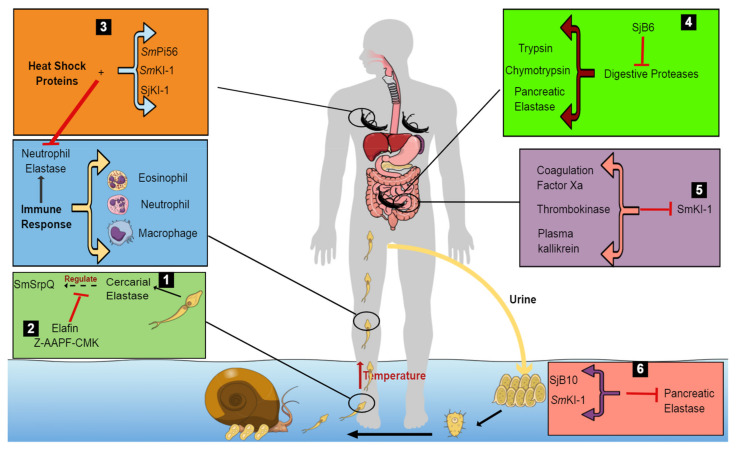Figure 1.
Model proposing the survival mechanisms of schistosomes within the host by protease inhibitors. The cercariae penetrate the human skin using cercarial elastase, which secretes a protease inhibitor, SmSrpQ. This regulates the production of cercarial elastase, in this way protecting the cercariae from its own elastase (1). The presence of CE inhibitors, Elafin and Z-AAPF-CMK, inactivates CE, blocking SmSrpQ regulation, and thus, preventing successful host penetration (2). However, in their absence, the cercariae migrate through various tissues in the host. This stimulates an immune response in the human host, leading to the release of effector cells and specific proteases such as NE to defend the human body (2). To counteract the host’s immune response, schistosomules secrete various protease inhibitors (SmPi56, SmkI-1 and SjKI-1) and heat shock proteins to inhibit the effects of NE (3). In the small intestine (4), schistosomes escape digestion by digestive enzymes through the secretion of SjB6, which inhibits digestive proteases within the host (trypsin, chymotrypsin and pancreatic elastase). In the mesenteric veins of the host, adult worms prevent blood coagulation by secreting SmKI-1, which inhibits various blood-clotting factors, in this way interfering with blood flow to vital organs of the body (5). The worms survive and produce eggs to continue the infection cycle. These eggs are protected from the effects of pancreatic elastase by SjB10 and SmKI-1 (6).

